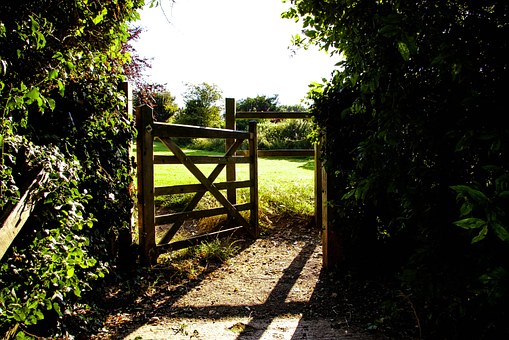
The GDP Inspectorate is embarking on a pilot of a new inspection approach that will impact holders of a Wholesale Dealer’s Licence (WDA(H)) whose main activities operate from a head office supplied from a number of ‘satellite’ facilities. For the companies selected, their satellite sites will be assessed remotely using information provided by the company in a standardised format.
Who will be affected?
The Office Based Evaluation and Risk Assessment (OBERA) is targeted at companies that operate from a single head office location, where the majority of the wholesale activity takes place, with a number of satellite sites which perform a very limited range of GDP activity.
Inclusion in the programme will be dependent upon the head office of the company passing an on-site 'Gateway Inspection’.
For the purposes of the pilot, companies with over 100 sites on their Wholesale Dealer’s Licence will be allocated a Gateway Inspection first. These companies will be contacted shortly, with the Gateway Inspections scheduled to commence during spring 2019.
What is the process?
The Gateway Inspection will establish whether the company is suitable for participation in the scheme.
The inspection will follow the standard GDP inspection format and be chargeable as such. The inspector(s) will focus on aspects of GDP that relate to the business model being operated.
It is expected that the company will have documented, and have available for inspection, an overview of the processes used in their stock transfer model and that it will be clearly defined which aspects are handled on behalf of the sites by the head office.
Typically, these would include recall co-ordination, aspects of the quality management system (QMS), transport provision and, for some models, centralised ordering. The precise functions will vary from company to company.
Depending on the size and complexity of the operation, this Gateway Inspection may take longer than a single day. The inspector(s) will specifically - but not exclusively - be looking for evidence of the following:
- all sites named on the WDA(H) are the same legal entity as the licence holder
- none of the sites named on the WDA(H) are undertaking any sales or supply to any party other than the head office
- that the Responsible Person can demonstrate, via evidence, sufficient oversight and control of these satellite sites and that the means of audit and self-inspection on these sites are adequate and effective
- that the QMS at head office adequately covers the system of order-placing and ensures that, where products under ‘quota’ are routinely ordered, patient supply is not adversely affected
- that any orders placed by the satellite site under instruction by the head office are adequately recorded and documented and are available for inspection
- that transport from the satellite sites back to the head office follows GDP and has been suitably risk assessed, with adequate data being available to back up the assessment
- that the head office has control over and a system to oversee any occurrence of potential falsified stock being introduced into the wholesale chain by the satellite site
- that there is a system to prevent any decommissioned product from re-entering the wholesale chain
- that the storage facilities at the head office site are suitable and adequate
- that the stock brought back into the head office from satellite sites is being further distributed in accordance with GDP
- that control over any activity performed at head office on behalf of the satellite site can be demonstrated
- that there is a demonstrably effective QMS covering the activities.
Passing the Gateway Inspection allows progression to the OBERA stage of the process.

The OBERA process
MHRA will ask the company to complete a questionnaire for a number of sites. The site names and numbers will be notified by letter and will equate to approximately 25% of the sites named on the WDA(H). A timescale for the submission of this data will be notified. Each site must submit a fully completed questionnaire.
The completed questionnaires will be sent to a dedicated email address, along with requested photographic evidence and a declaration by the Responsible Person that the data presented for each individual site is accurate.
The questionnaires will be processed, and further information may be requested. Once the assessment is complete, the site will be notified of the outcome, along with the approximate timescale for re-inspection, and be invoiced accordingly.
In addition to the Office Based Evaluation and Risk Assessments, a number of on-site ‘assurance inspections’ of selected satellite sites will also be undertaken to quality-assure the process.
Why the change?
By changing the process for assessing risk at these satellite sites from physical inspection to remote evaluation, MHRA will be able to increase its level of oversight whilst reducing the regulatory burden on those companies with a large number of sites which perform reduced or limited levels of GDP activity.
The Gateway Inspection performed at the head office site is designed in such a way that a company has the opportunity to demonstrate to the inspector(s) that the Responsible Person has good control over the GDP activities being performed at the remote satellite sites and that these sites are compliant.
This also allows the inspectorate to redirect resources towards sites deemed to present a greater risk according to the established risk-based inspection model.
What happens if the company perform poorly during the Gateway Inspection or an assurance inspection?
If the company fails the Gateway Inspection, it will be notified via the post inspection letter that it will not be included in the OBERA programme. Any re-assessment for suitability will be made during the next scheduled head office inspection.
If an assurance inspection carried out at a satellite site indicates that the site is not GDP-compliant, then additional assurance inspections will be performed on other selected sites to ascertain whether this is a systemic failure of control by head office or a single instance of a poorly performing site/member of staff.
MHRA reserves the right to remove individual sites from the OBERA scheme or, if necessary, from the WDA(H) under the IAG process.
https://www.gov.uk/government/groups/inspection-action-groups
Will this new style of inspection be available to companies operating fewer sites?
Once the OBERA process has been proven through the pilot, it is anticipated that it will be applied to other companies operating applicable business models. We will publish a follow-up blog post towards the end of 2019 on the findings from this pilot phase.
Don’t miss the next post, sign up to be notified by email when a new post comes out

